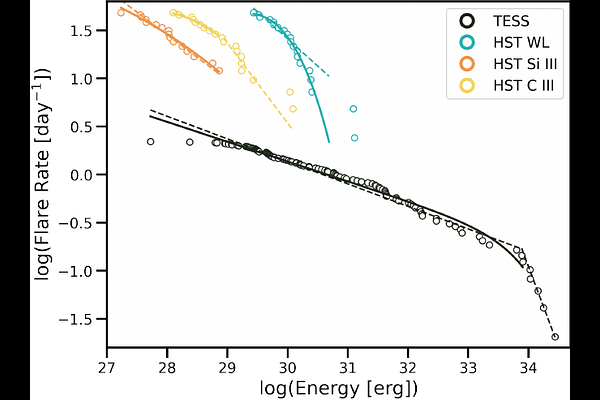Probing Non-Thermal Processes in Stellar Flares on AU Mic

Probing Non-Thermal Processes in Stellar Flares on AU Mic
Adalyn Gibson, Adam F. Kowalski, Adina D. Feinstein
AbstractThe role of non-thermal proton energy transportation during solar and stellar flares is largely unknown; a better understanding of this physical process will allow us to rectify longstanding deficiencies in flare models. One way to detect the presence of non-thermal protons during flares is through the Orrall-Zirker (OZ) effect whereby an enhanced red wing appears in hydrogen emission lines (e.g., Lyman-$\alpha$ at 1215.67 Angstrom). We analyze archival Hubble Space Telescope/Cosmic Origins Spectrograph G130M (1060 - 1360 Angstrom) observations of the young M dwarf, AU Mic to search for evidence of OZ effect during the impulsive phase of six stellar flares with $E_\textrm{flare} \approx 10^{30 - 31}$ erg. While we found non-detections of the OZ effect, we note there is a pronounced blue enhancement in several C II and C III emission lines during one of the high-energy flares. We propose that either filament eruptions or chromospheric evaporation could be the mechanism driving this observed blue enhancement. We compare the far-ultraviolet (FUV) spectra to 1D radiative-hydrodynamic stellar flare models, which are unable to reproduce the blue enhancement and broadening in these cool flare lines. By completing a line-by-line analysis of the FUV spectrum of AU Mic, we provide further constraints on the physical mechanisms producing stellar flares on M dwarfs.